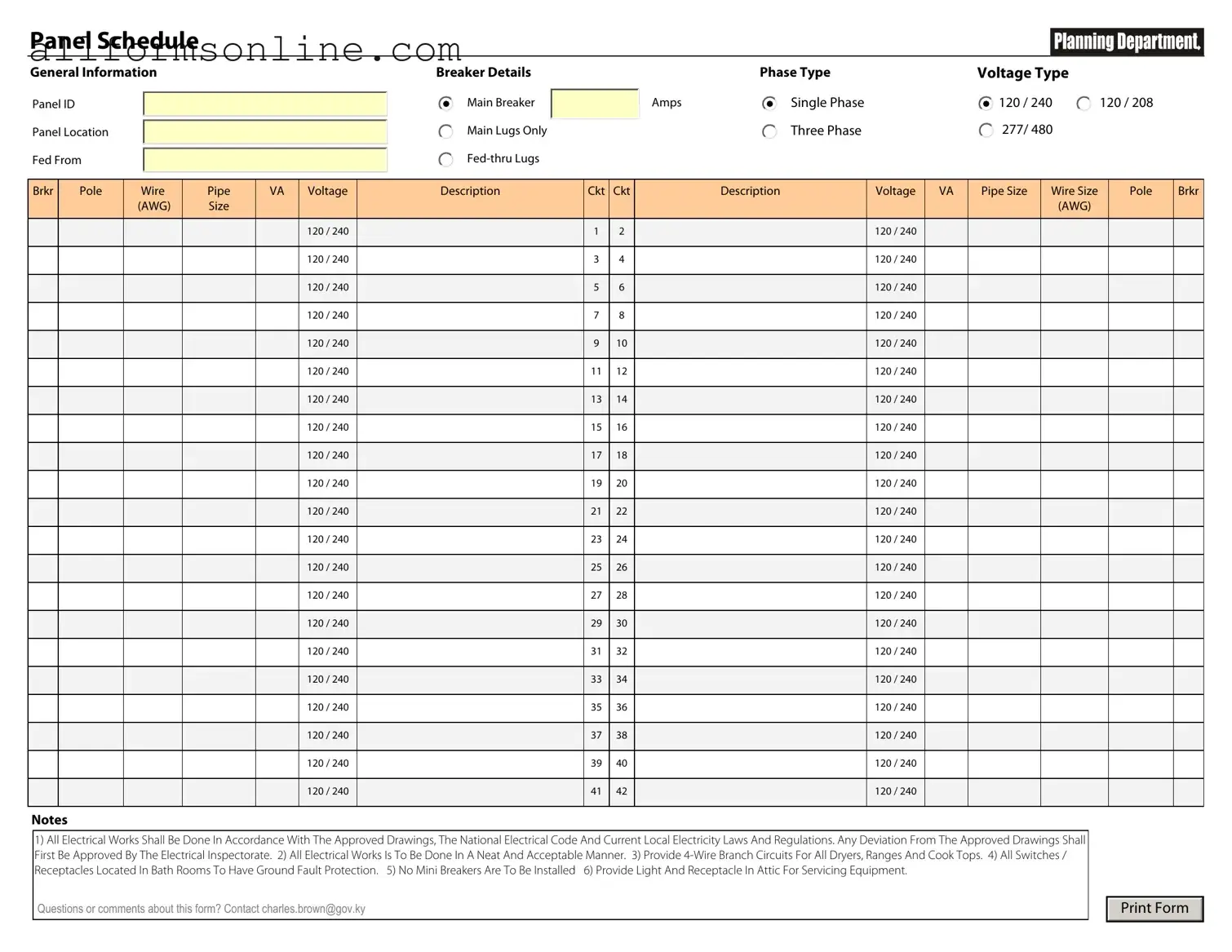Free Electrical Panel Schedule PDF Form
The Electrical Panel Schedule form is a crucial document that outlines the distribution of electrical circuits within a building. This form helps ensure that all electrical components are organized and easily accessible, promoting safety and efficiency in electrical management. Understanding its importance can simplify electrical maintenance and upgrades, making it essential for homeowners and professionals alike.
Ready to take control of your electrical system? Fill out the form by clicking the button below!
Fill Out Your Form Now
